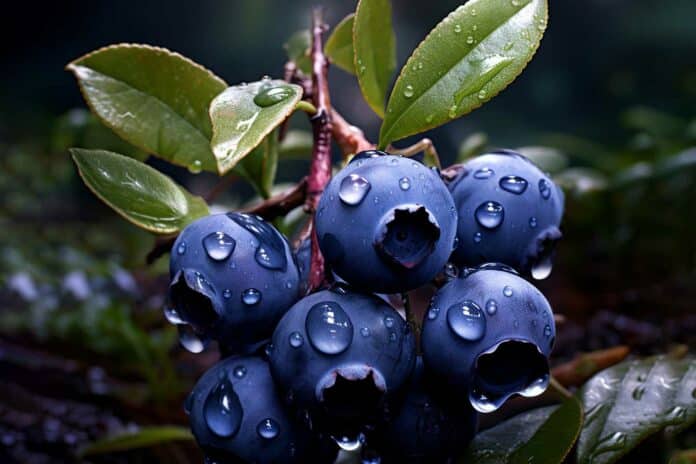It might seem strange that there aren’t more blue fruits since many animals that eat fruit, especially those who rely on sight, are particularly sensitive to the color blue. However, some fruits appear blue even though they don’t have blue pigments.
Scientists at the University of Bristol investigated dark-pigmented fruits with wax blooms, like blueberries, plums, and juniper cones, and found that a structural color mechanism is responsible for their appearance.
In a new study, researchers have uncovered why blueberries appear blue even though their skin pigments are dark red. It turns out that the blue color comes from a layer of wax surrounding the fruit, which contains tiny structures that scatter blue and UV light.
This gives blueberries their blue color when seen by humans and a blue-UV appearance to birds. The blue-UV reflectance happens because of the interaction between the crystal structures of the wax and light.
Rox Middleton, a Research Fellow at Bristol’s School of Biological Sciences, explained that the blue color of blueberries cannot be extracted by squeezing because it’s not in the pigmented juice.
The researchers removed the wax and re-crystallized it to understand this, creating a brand-new blue-UV coating.
This ultra-thin colorant, about two microns thick, is visibly blue and reflects UV light well, which could open up new possibilities for colorant methods.
Nature often uses a thin layer of wax on plants, which serves various functions, including hydrophobicity and self-cleaning. However, until now, scientists have not realized how important this wax’s structure is for visible coloration.
The researchers plan to explore more accessible methods of recreating and applying this coating, which could lead to more sustainable, biocompatible, and even edible UV and blue-reflective paint. These coatings also offer multiple functions, similar to natural biological ones that protect plants.
Rox emphasized the excitement of discovering an unknown coloration mechanism in common fruits like blueberries and being able to reproduce it to create a new blue coating. The goal is to integrate all the functionalities of this natural wax into artificially engineered materials.
Journal Reference:
- Rox Middleton, Sverre Aarseth Tunstad, Andre Knapp et al. Self-assembled, disordered structural color from fruit wax bloom. Science Advances. DOI: 10.1126/sciadv.adk4219
